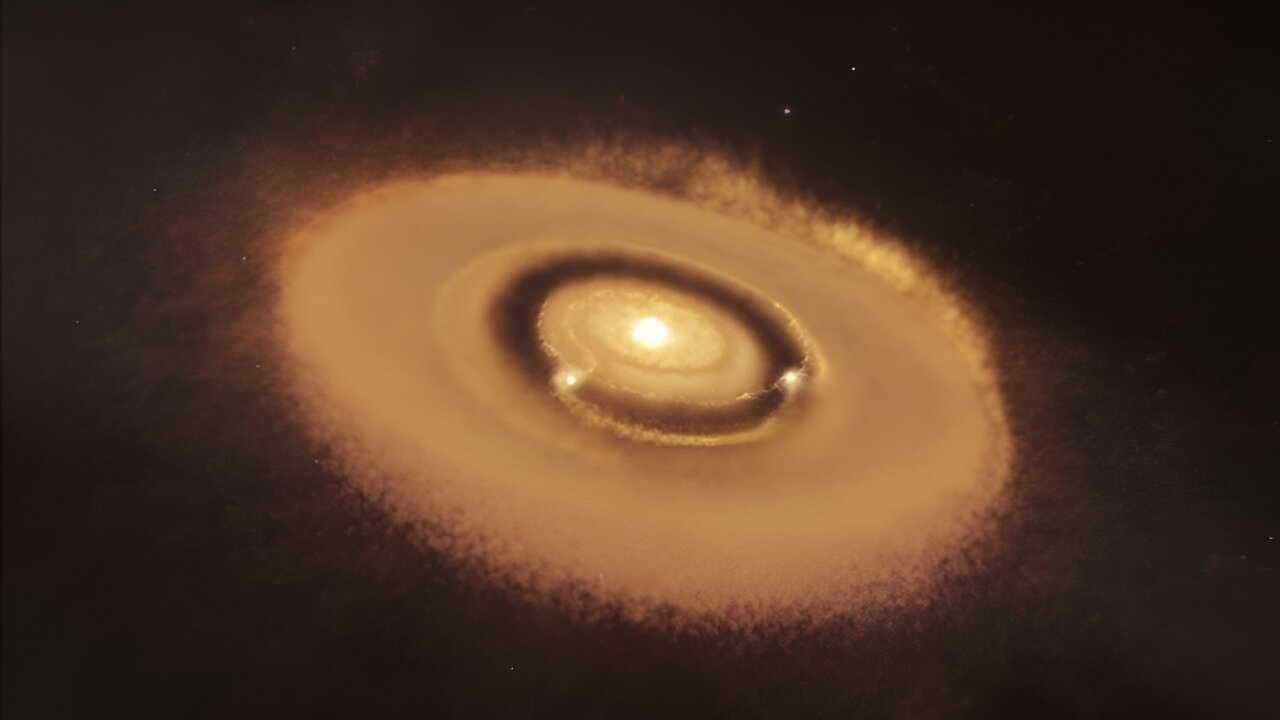The PDS 70 star system is well known for having a gas-dust disk and two planets forming in it. Recently, scientists found traces of a third body orbiting the star in it. And they did it directly.

Unique PDS 70 system
A third planet has already been discovered in the PDS 70 system. There would be nothing unusual in this news if it were not for the fact that the existence of the object was confirmed by direct observations. This is a rarity in modern astronomy. Indeed, among more than 5 thousand planets and 10 thousand unconfirmed candidates, most of the discoveries were made by the transit method or by measuring radial velocities. Scientists have been able to see only 19 luminaries directly all the time.
In general, the PDS 70 system is quite well known among astronomers. The main reason for this is its very young age — 5.3–5.5. The sun, located at a distance of 370 light-years from us, has already completed its formation and now a planetary system is forming in it.
The PDS 70 is still surrounded by a gas-dust disk, which, thanks to its proximity, can be seen quite well. Between 2018 and 2021, two planets were already found in it. They are at the stage of formation. One of them turned out to be extremely large.
Interestingly, the planets were discovered in the past due to direct observations. They are too clearly visible on three gas-dust disks. However, then it had to involve a number of powerful tools: Exoplanet REsearch (SPHERE) and GRAVITY on the ESO’s Very Large Telescope (VLT) and the Atacama Large Millimeter/Submillimeter Array (ALMA).
Third planet
This time, the main role in the discovery was played by the James Webb Space Telescope, or rather the MIRI camera mounted on it. The mid-INfrared Disk Survey (MINDS) project team has been using it for several years to study protoplanetary disks. With its help, they have already discovered traces of water in the protoplanetary disk PDS 70.
Back in 2019, the Very Large Telescope received an unusual signal from PDS 70, which could be a trace of a third planet. But since then, no confirmation of this discovery has been received. Therefore, the scientists decided to check everything again.
For this, they took the light of another star, which looked very similar to PDS 70, but did not have a gas-dust disk, and “subtracted” its light from the images of the system under study. Thus, they found out what the gas-dust disk actually looked like and were able to confirm the existence of a third planet in it.
The most interesting thing about the new planet is that it may be in a 1:2:4 orbital resonance with the other two. This is quite a rarity, and it would be interesting for scientists to observe how the system evolves.
More importantly, the planets of PDS 70 are just forming, but they are already quite large. They are close to the sun and can subsequently turn into “hot Jupiters”. And this challenges current views on the formation of such systems. According to them, gas giants should form far from their luminaries.
According to phys.org
Follow us on Twitter to get the most interesting space news in time
https://twitter.comne/ust_magazine


